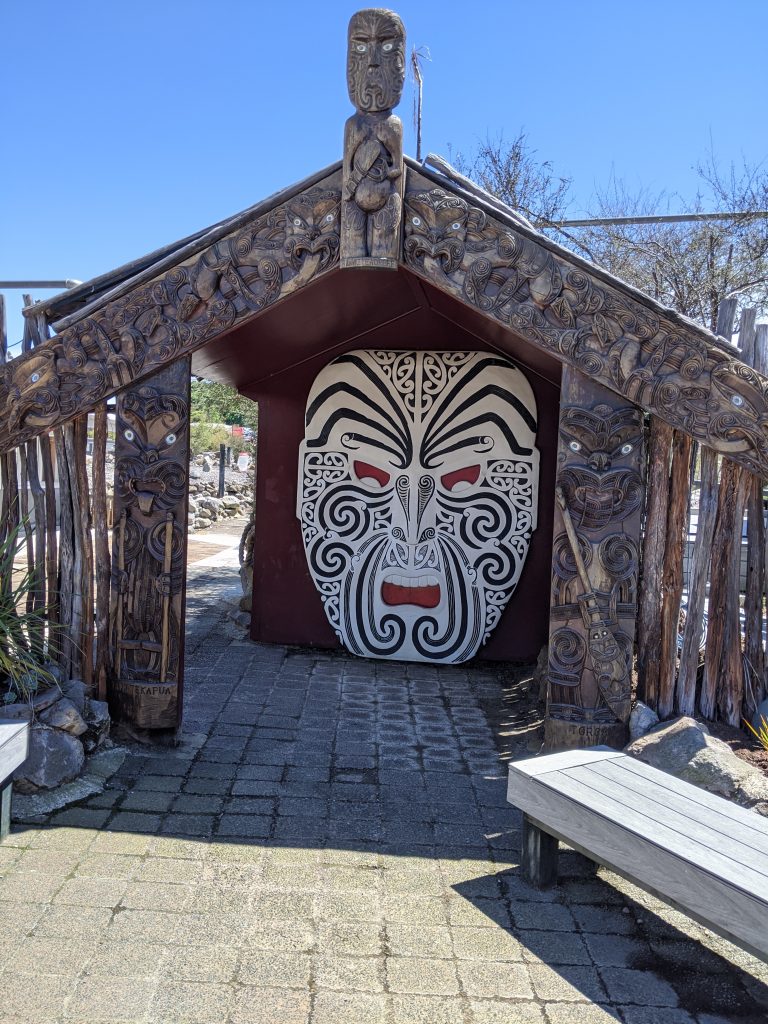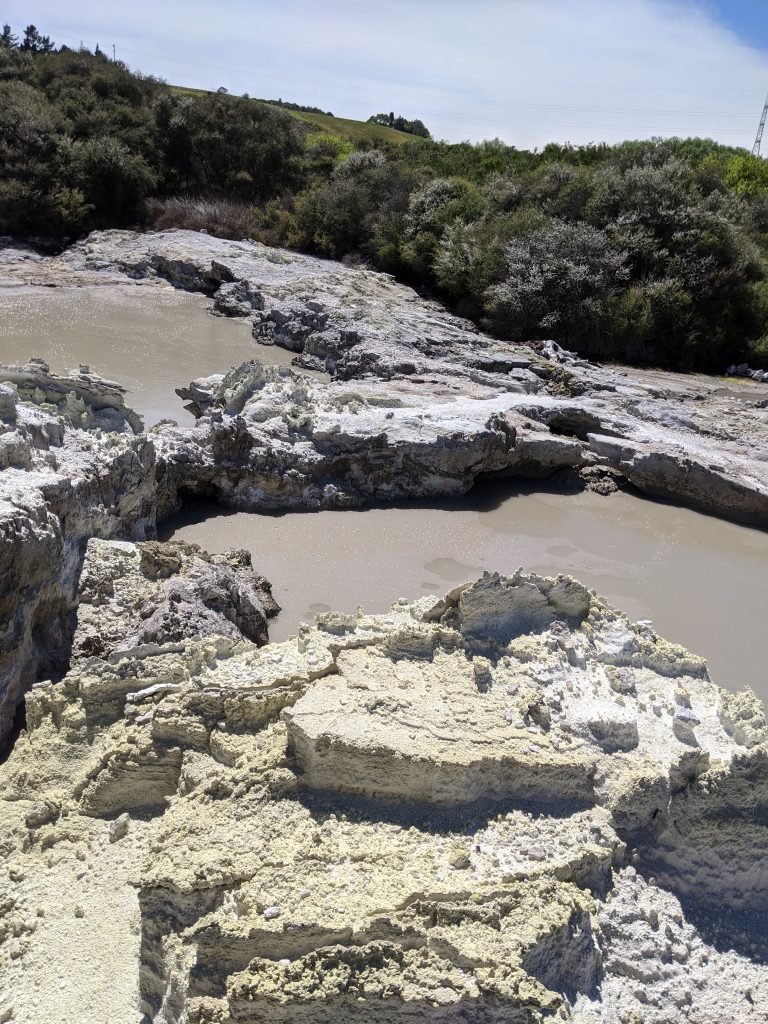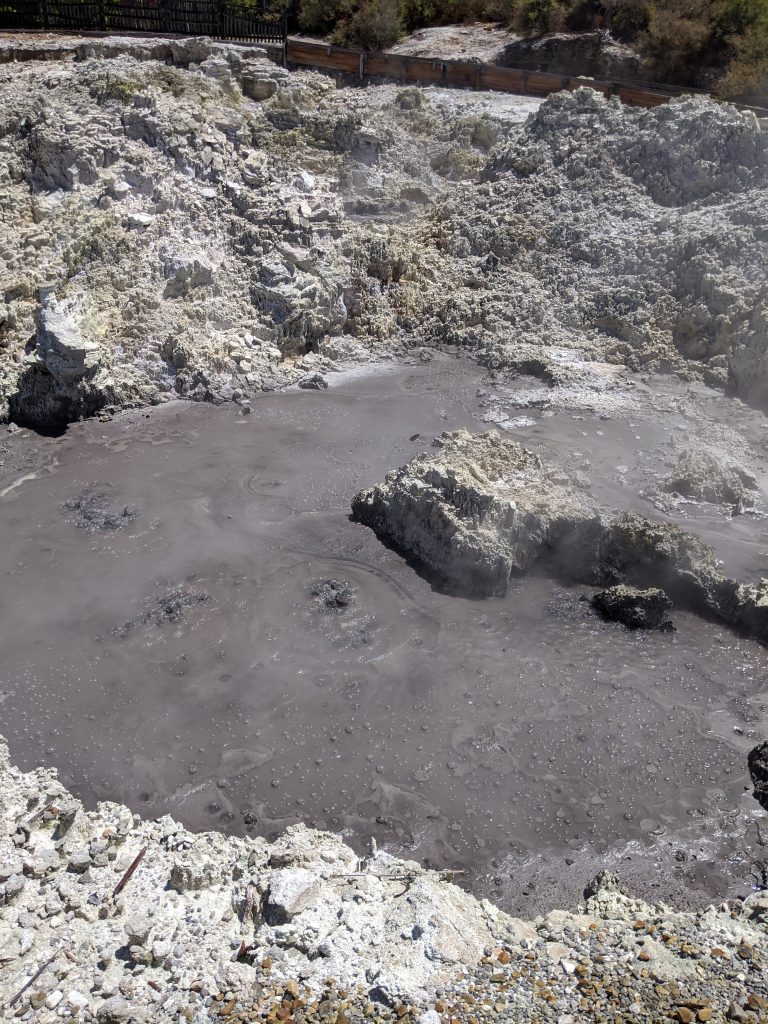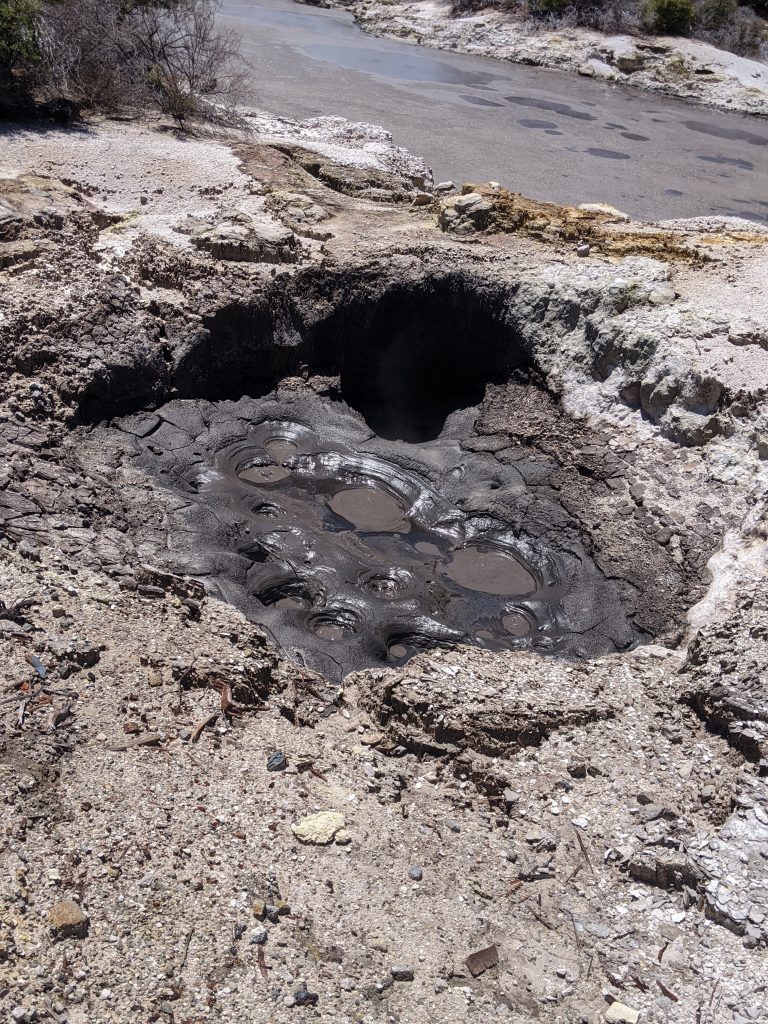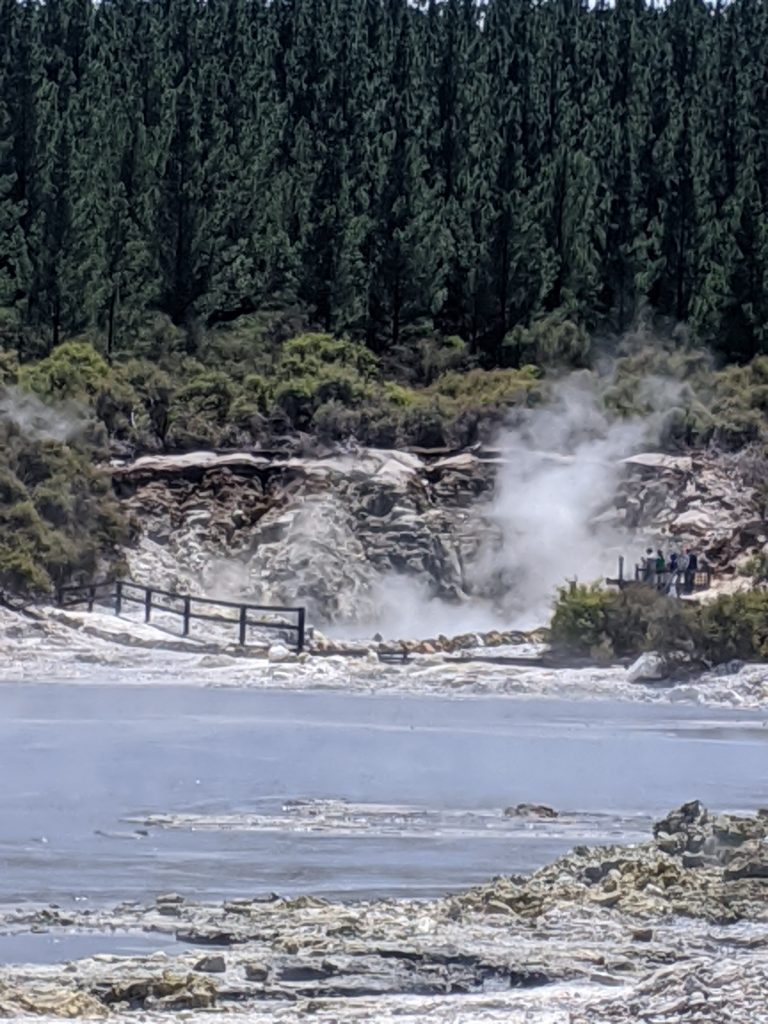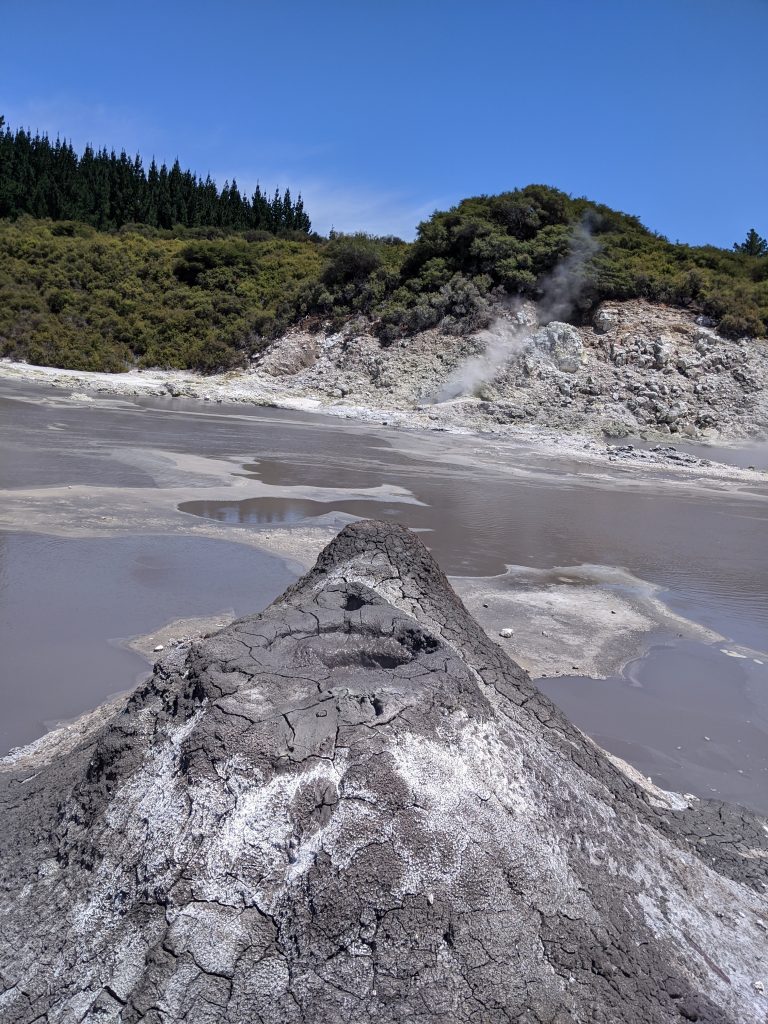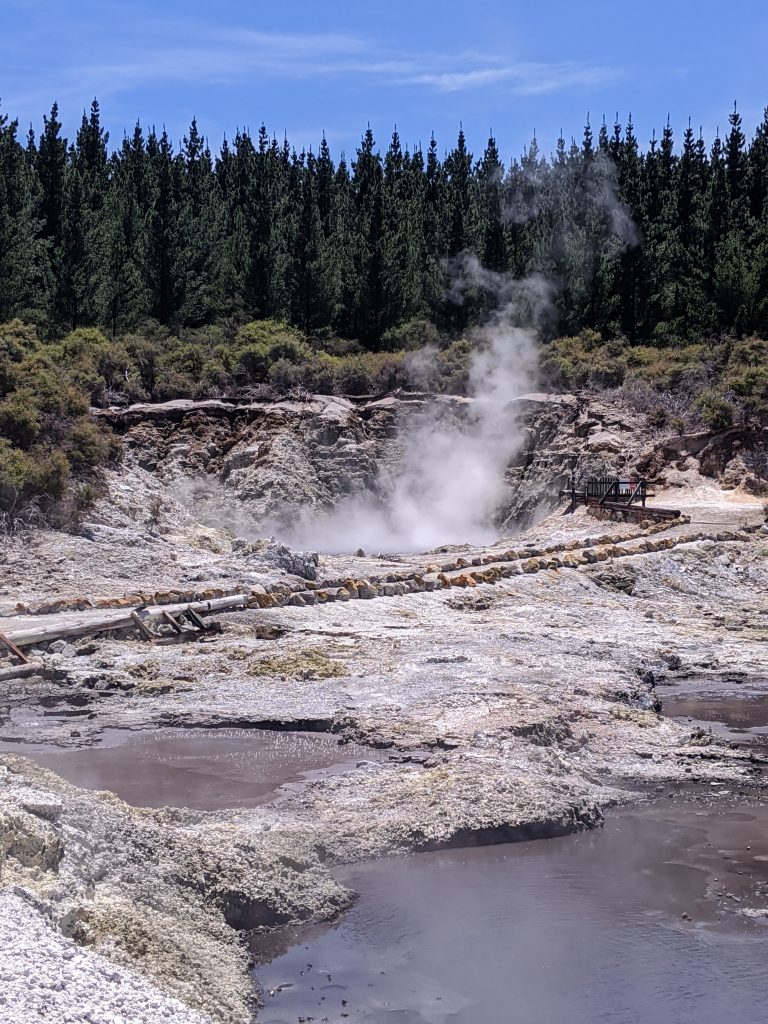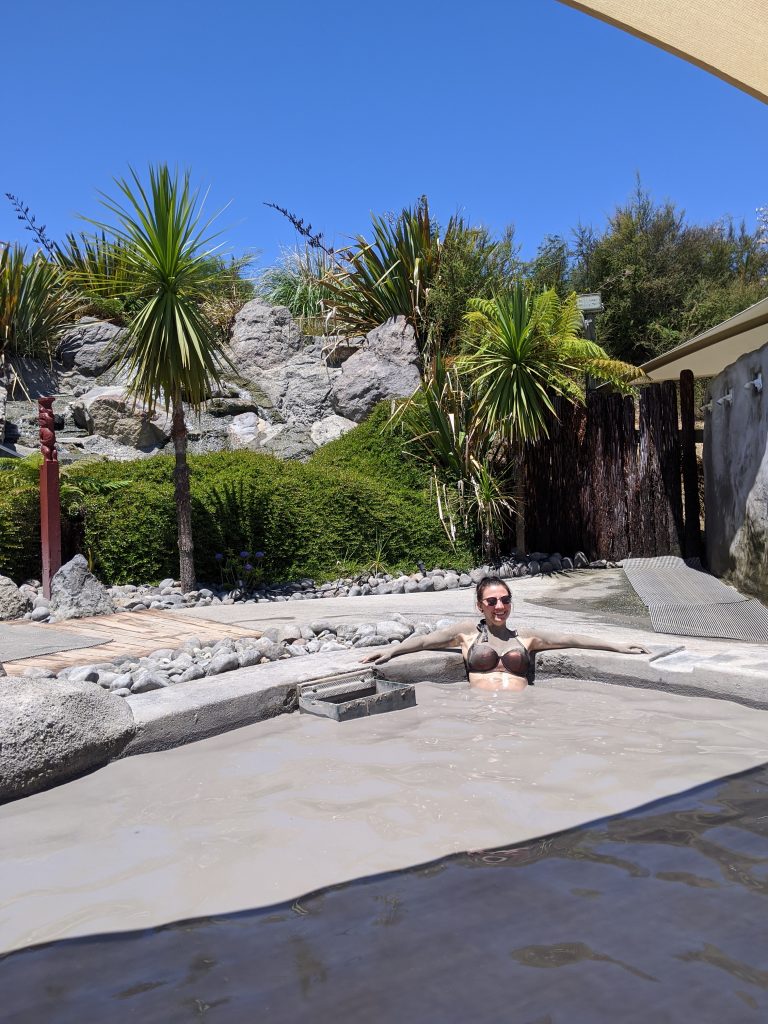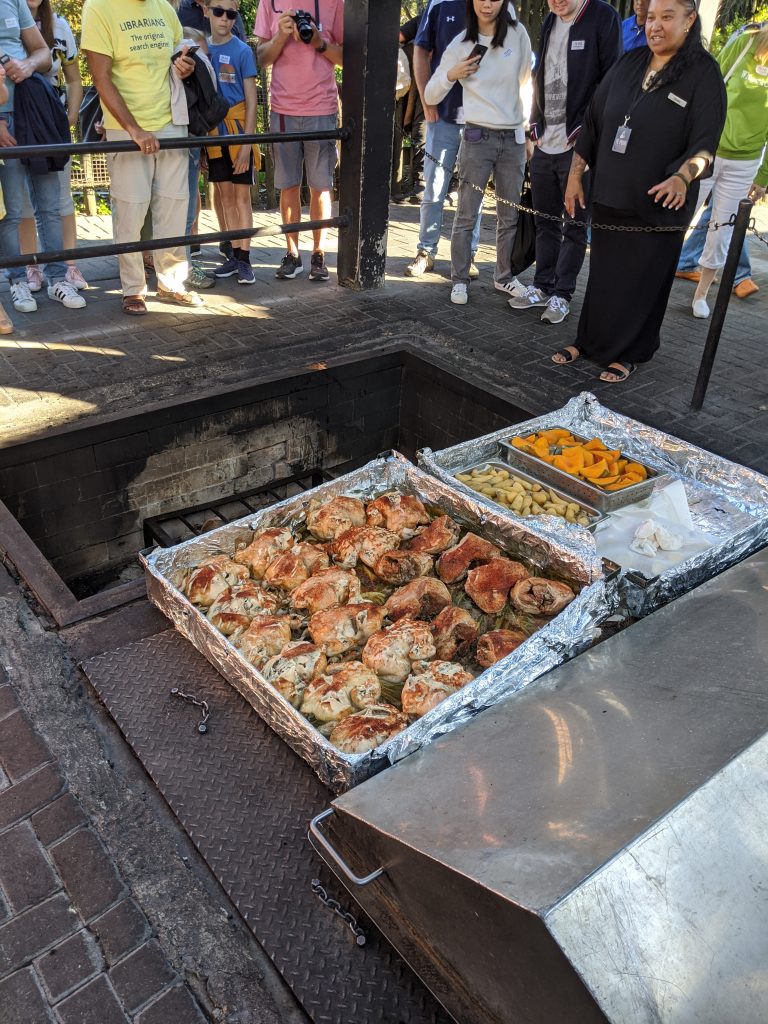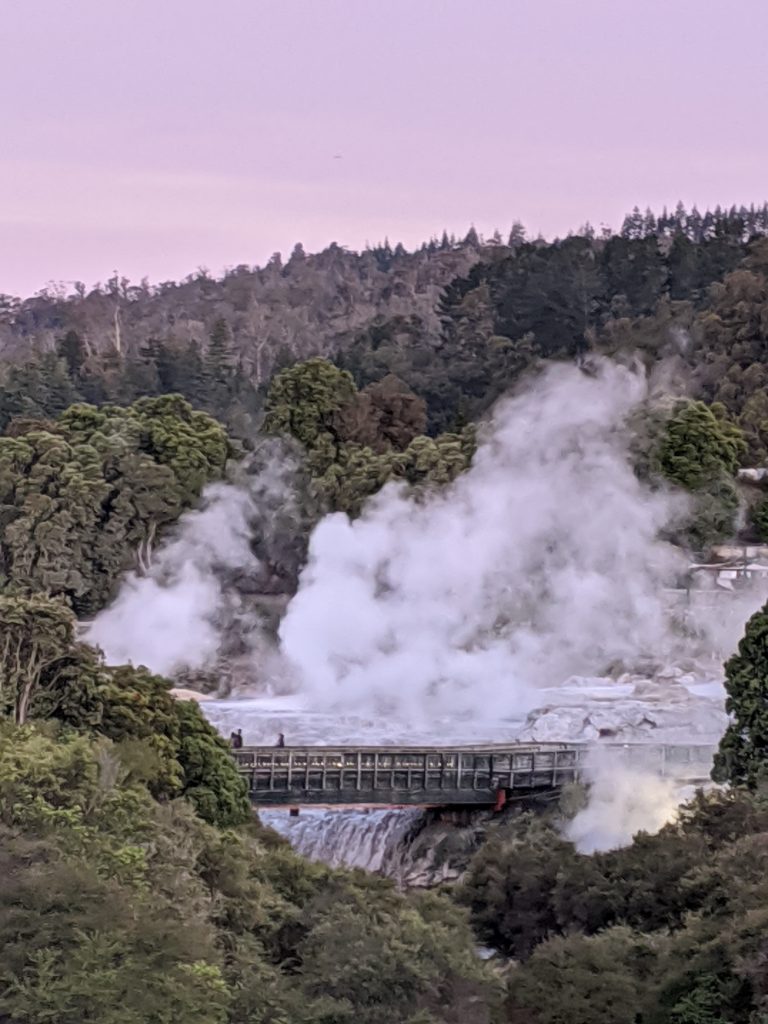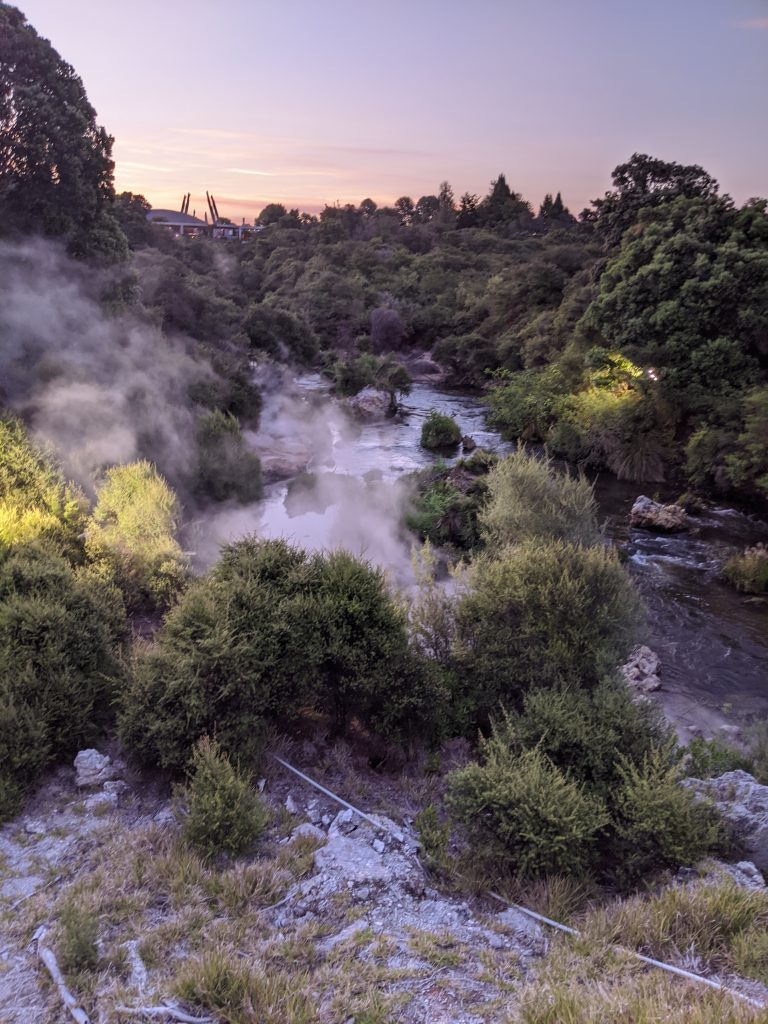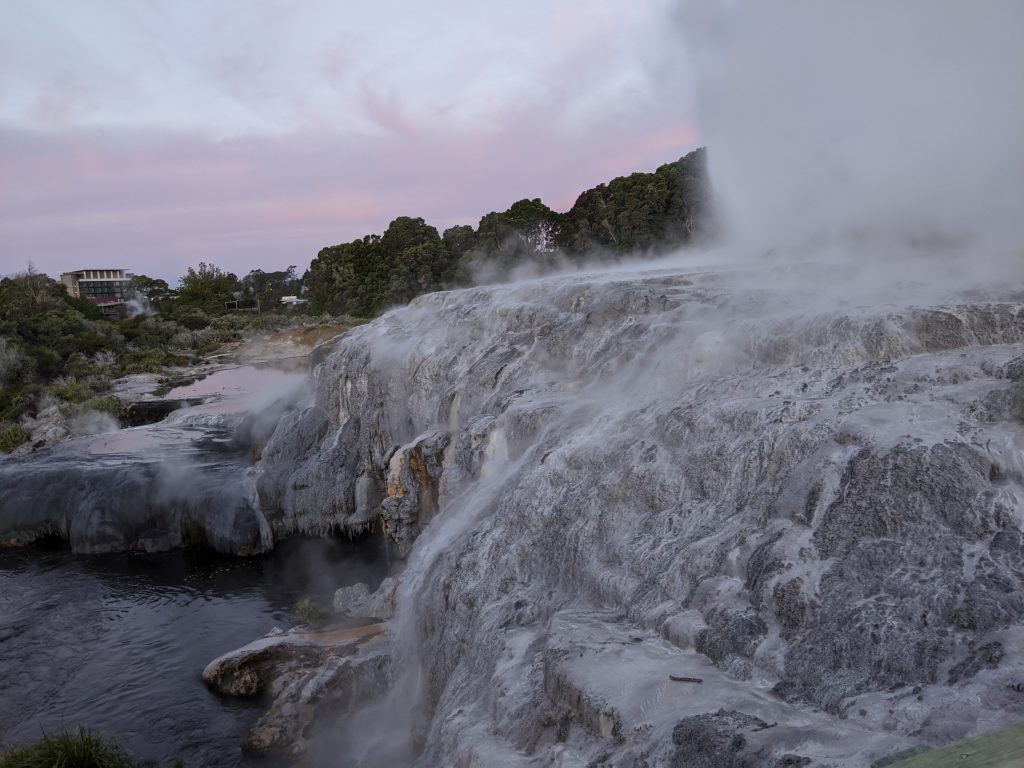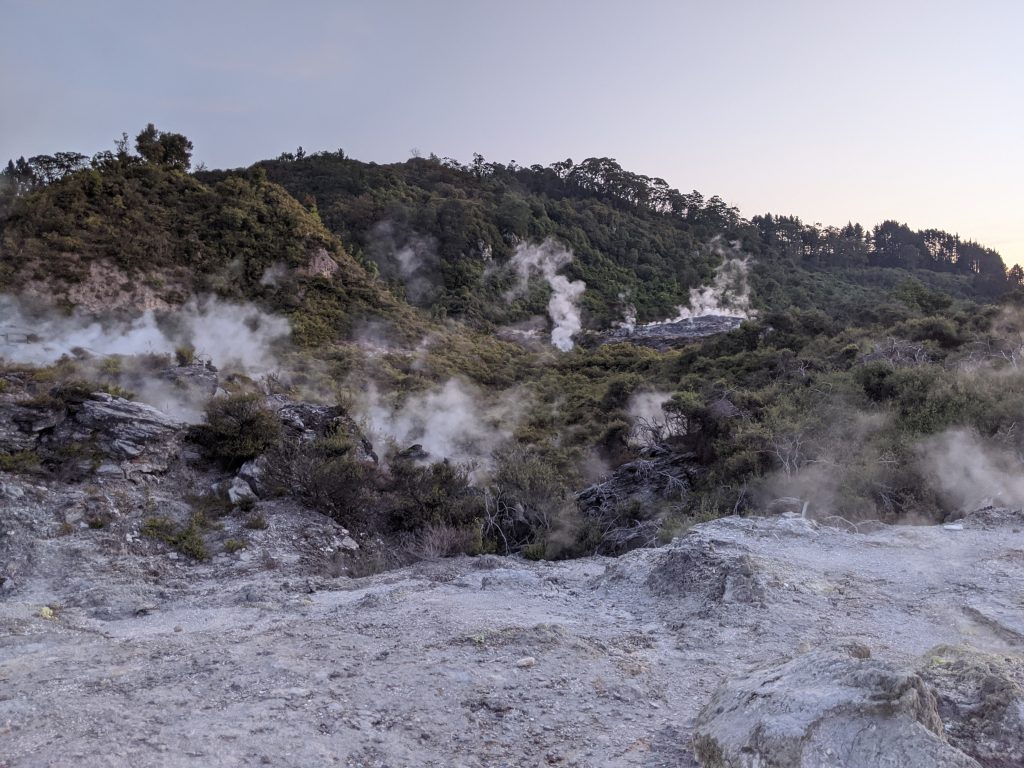I came to Rotorua a few years ago and knew I needed a repeat on this trip. The small town is host to a plethora of volcanic activity, surfacing in hot springs, mud pools, steaming ponds, and a smell of sulfuric rotten eggs that takes weeks to get out of my nose. The city itself is small and quiet, but it’s one of my favorite towns to visit due to not only the volcanic activity but also the wealth of Maori culture in this region.
My first stop in Rotorua was to Hell’s Gate – a Maori-run hot spring and mud bath. It’s easy to see how it gets its name. Even in summer, the steam and bubbling pools give the area a supernatural feeling. It’s the perfect setting to learn about Maori culture, as the pools have been used by the Maori for almost a millennia, and each pool is steeped with legend.
Hell’s Gate itself is unpredictable and ever-changing. There are many places you can see where the ground has overheated and taken over the walking path, forcing a new path to be built. New Zealanders understand that it’s useless to try and fight nature – the land is going to continue changing, and humans are the ones that have to adapt.
As I walked into the nature area of Hell’s Gate, filled with trees and wildlife, I noticed something automatically confusing and unsettling – the sulfuric smell completely dissipated, even though the scent permeates the entire city. In this forest, there is a specific type of fungi that absorbs the scent, removing any hint of rotten egg smell.
That night, I went to a Maori dinner and show at Te Puia. Even though Maori music and art play a huge part in New Zealand culture, the culture has been threatened over the last several decades as people began to adopt European ways of life. Maori is an official language of New Zealand, and renewed interest in Maori culture in younger generations, as well as efforts of tribes to pass on their language, appear to have led to a resurgence in interest in the Maori history and way of life.
